Overview
More information on the overview of app management is available here: Intro: App Management
Tulip uses two types of versions for all apps: a Development Version and a Published Version. This allows you to make changes as a Tulip administrator without affecting the version that is live on the production floor.
When moving an app from the development stage to production, creating and managing versions becomes a crucial part of your workflow.
The Development Version
The initial version of all apps is a Development Version. Once you are ready to put an application into production, you should create a read-only version by publishing the app.
A published version is an unmodifiable (‘frozen’) copy of the development version at the time of publishing. There is no limit to the number of published versions for each app.
Since all ‘published’ versions are read-only, modifications to an app can only be done through its development version.
In summary, you create and edit apps using the development version. When you are ready to put a new version of the app into production, you should publish it.
Stations can be configured (in the Shop Floor screen) to run either the development version or the most recent published version. Typically, you will want to run the published version.
Benefits of Publishing an App
Each time an app is used on your production floor, data is collected. Tulip automatically tracks which version of the app was used by the operator during their workflow.
The advantage of Published Version is that it is immutable, preventing inadvertent changes from affecting the production floor. This structure allows for a robust validation process.
Each published version of an app is saved with a name and a timestamp.
Good Documentation Practice (GDP) requires you to save each version with a unique name that includes:
- the revision of the app
- the ID of the app (if it exists)
- the name of the app.
All these fields are automatically tracked in Tulip, including the date the app was published.
Publishing an App
To publish an app, follow these steps:
- Select the app you want to publish from your list of Tulip apps.
- Navigate to the "Versions" tab in the App Summary View.
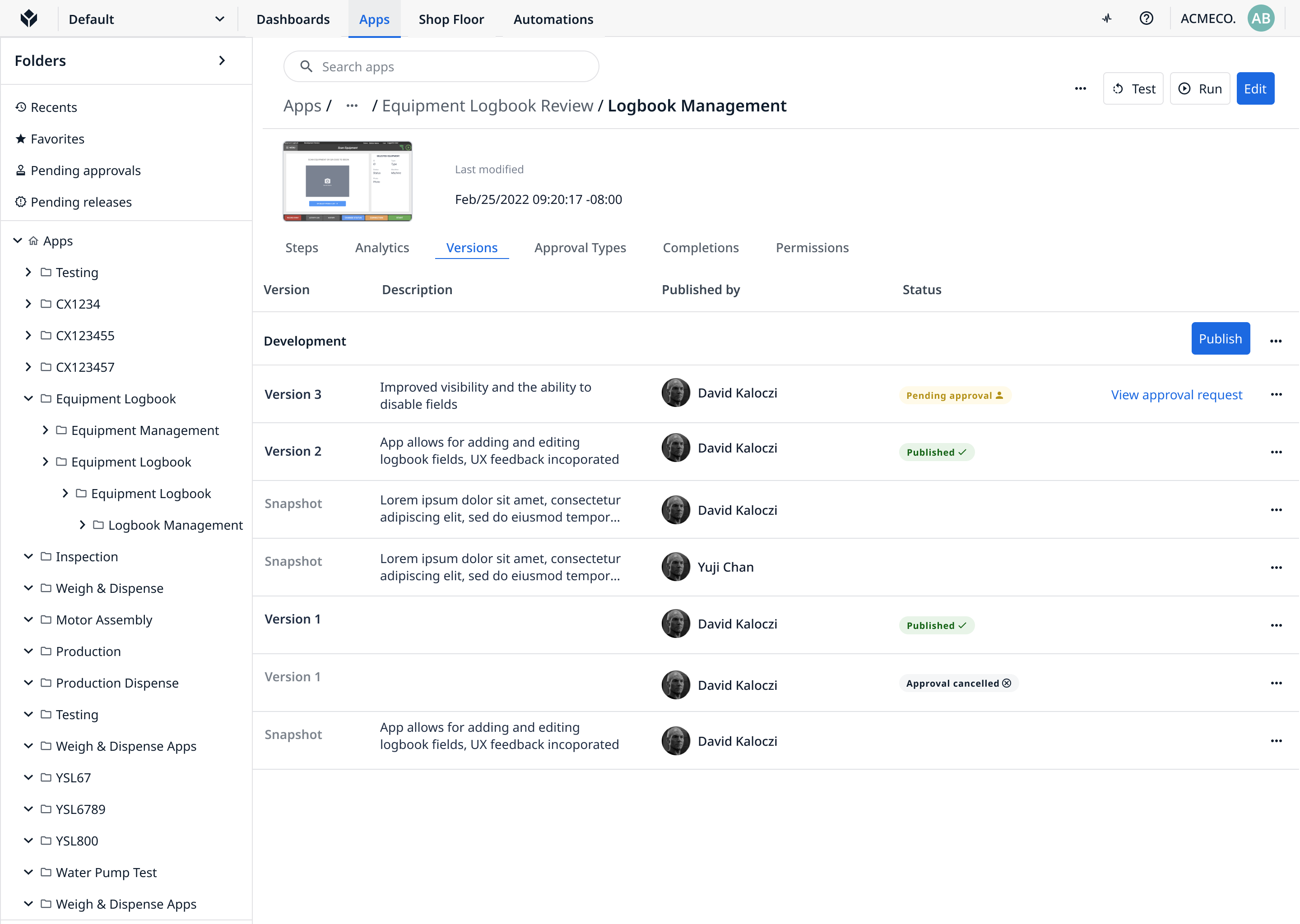
- Click the “Publish” button on the right side of the row with the development version.
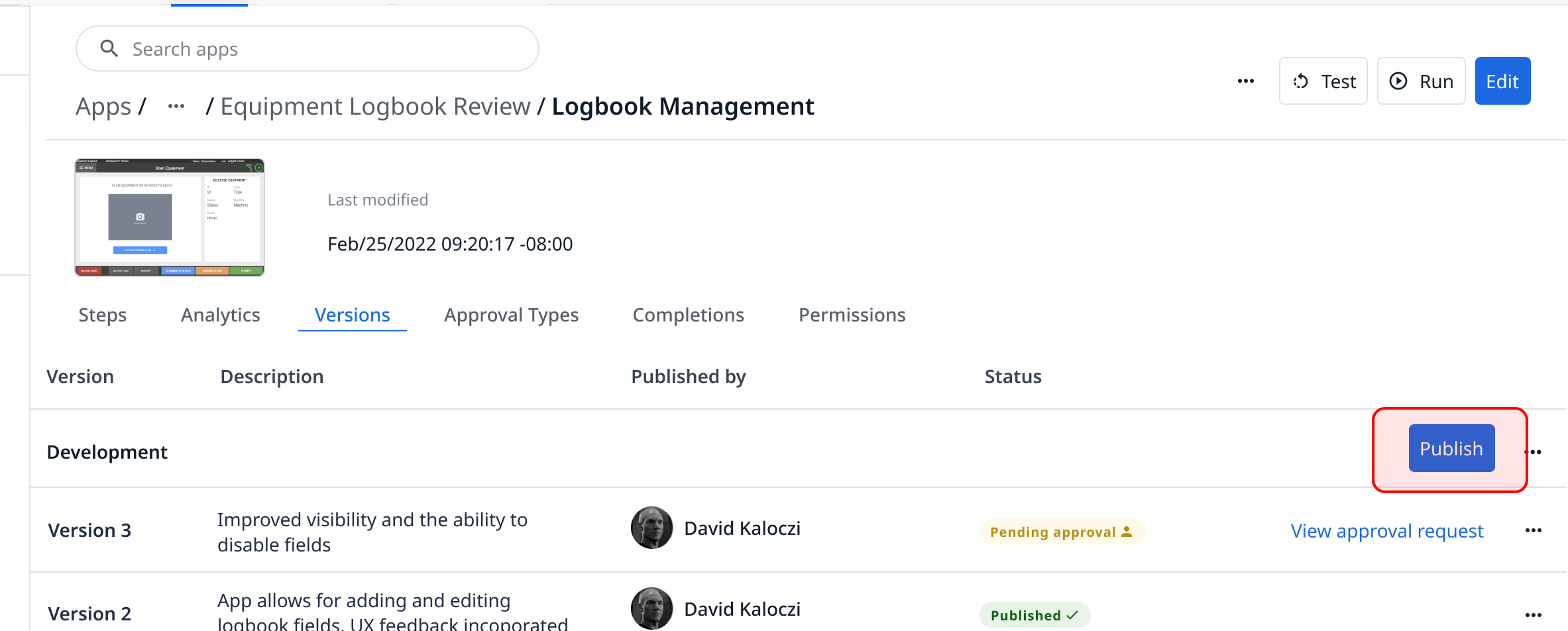
The version will be automatically numbered, and you can add a description to share changes with other team members. Once published, a new row will be added to the versions table titled "Version X".
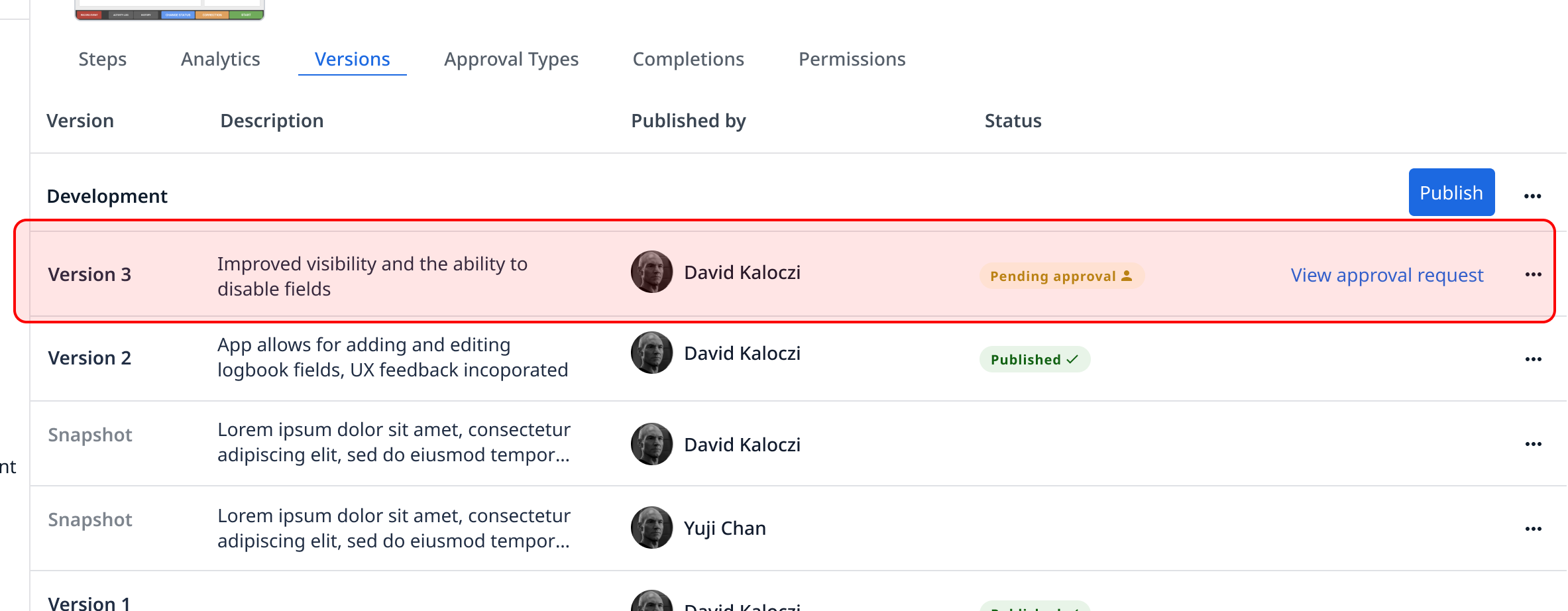
You can view the published version of the app by clicking the "..." button and selecting "View in Editor".
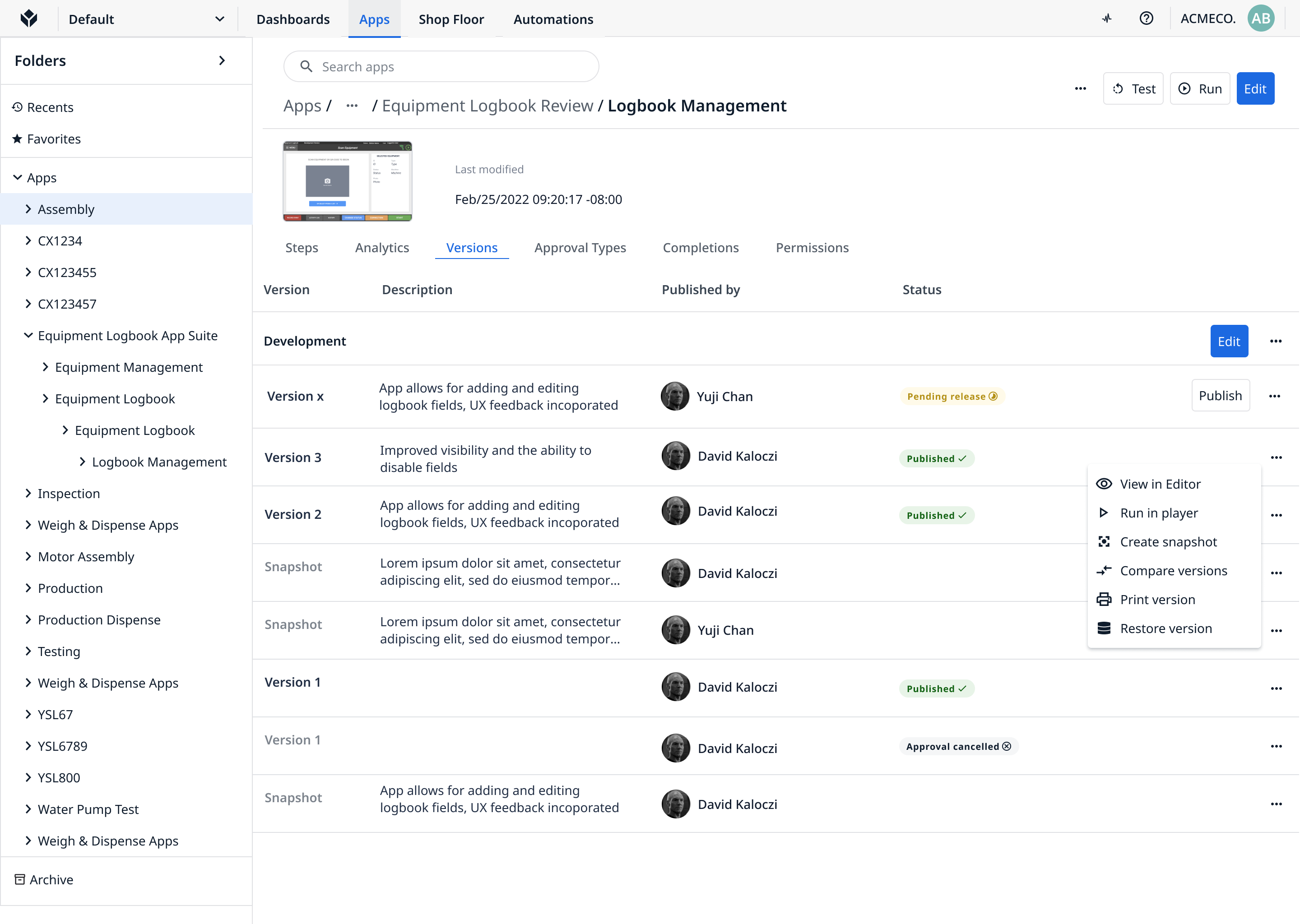
If you click "View" after publishing a version, you will notice that all editing tools are greyed out.
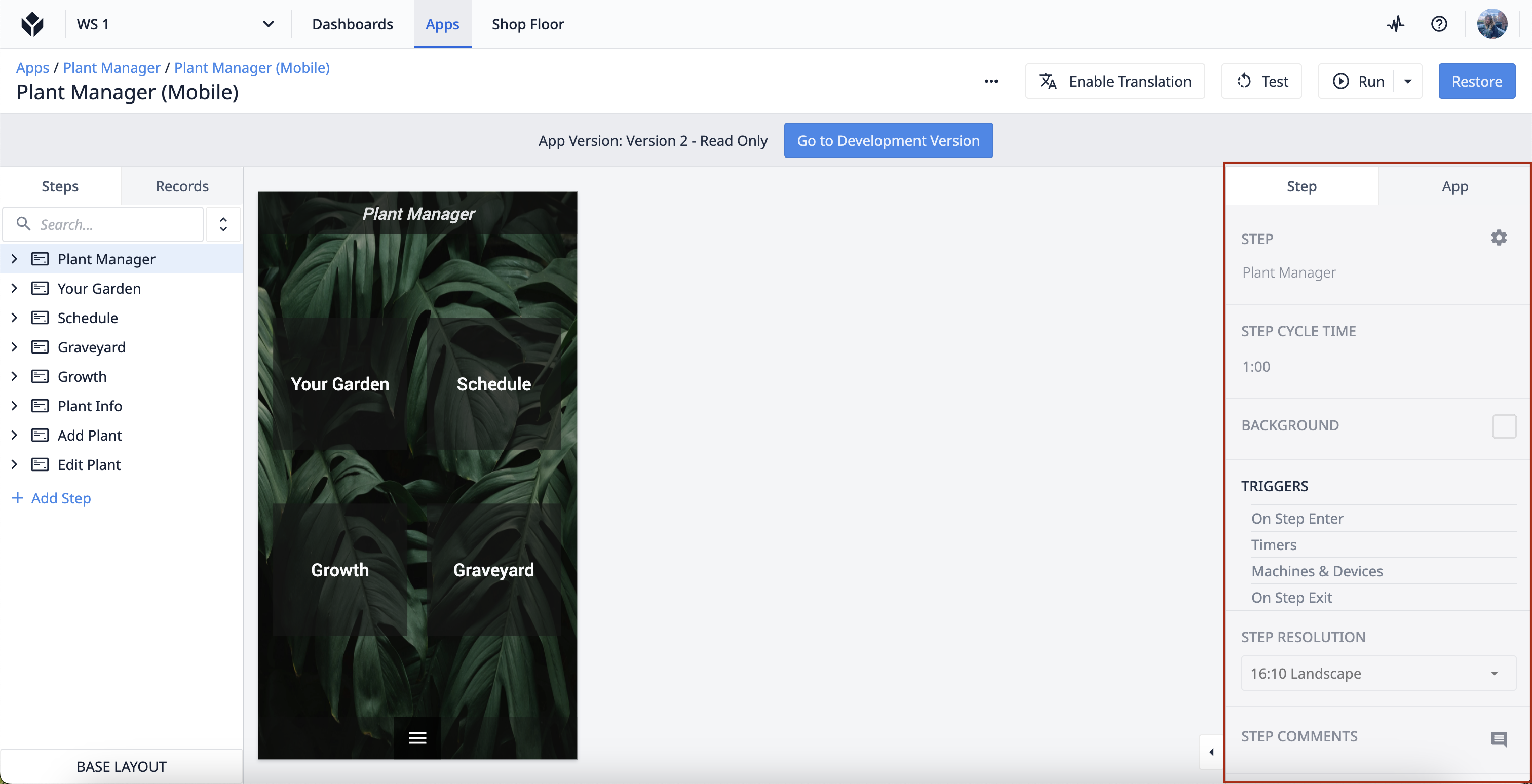
Add details in the description field and click "Publish Version X". More details of the publication flow can be found here: App Publication Overview.
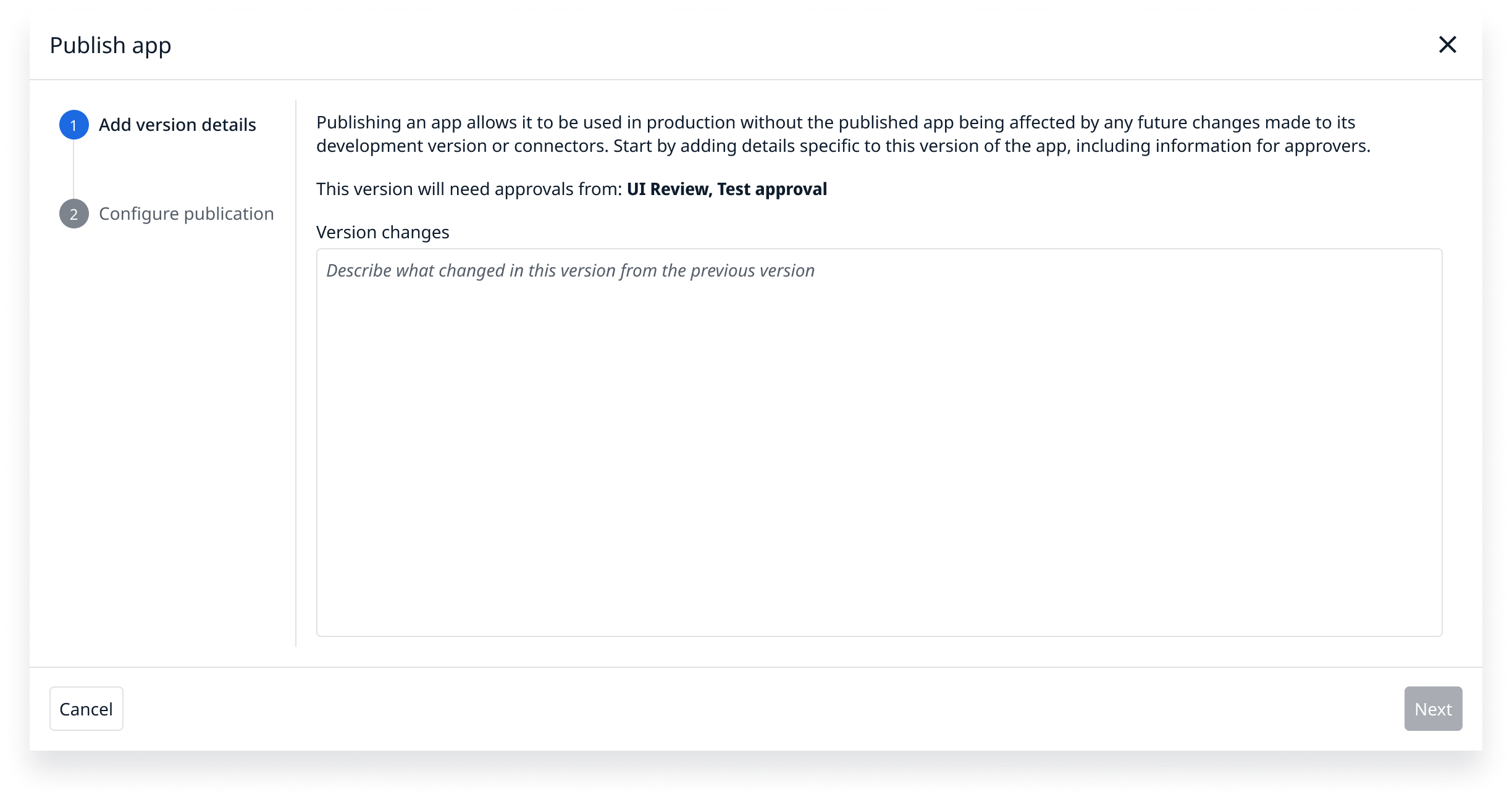
Using Published Apps on the Shop Floor
In general, only a published version of an app should be used in production to avoid the risk of the app definition changing while operators are following the steps. If the app is being used at a Station, the new version will go live to that station when the app is "Completed" or "Canceled".
It is also easier to track meaningful data trends using a published version, otherwise all completions and data collection will be reported under ‘Development Version’, potentially altering data interpretation.
Using Snapshots
Sometimes, you need to "roll back" to a previous version of the app using the "Restore" button.
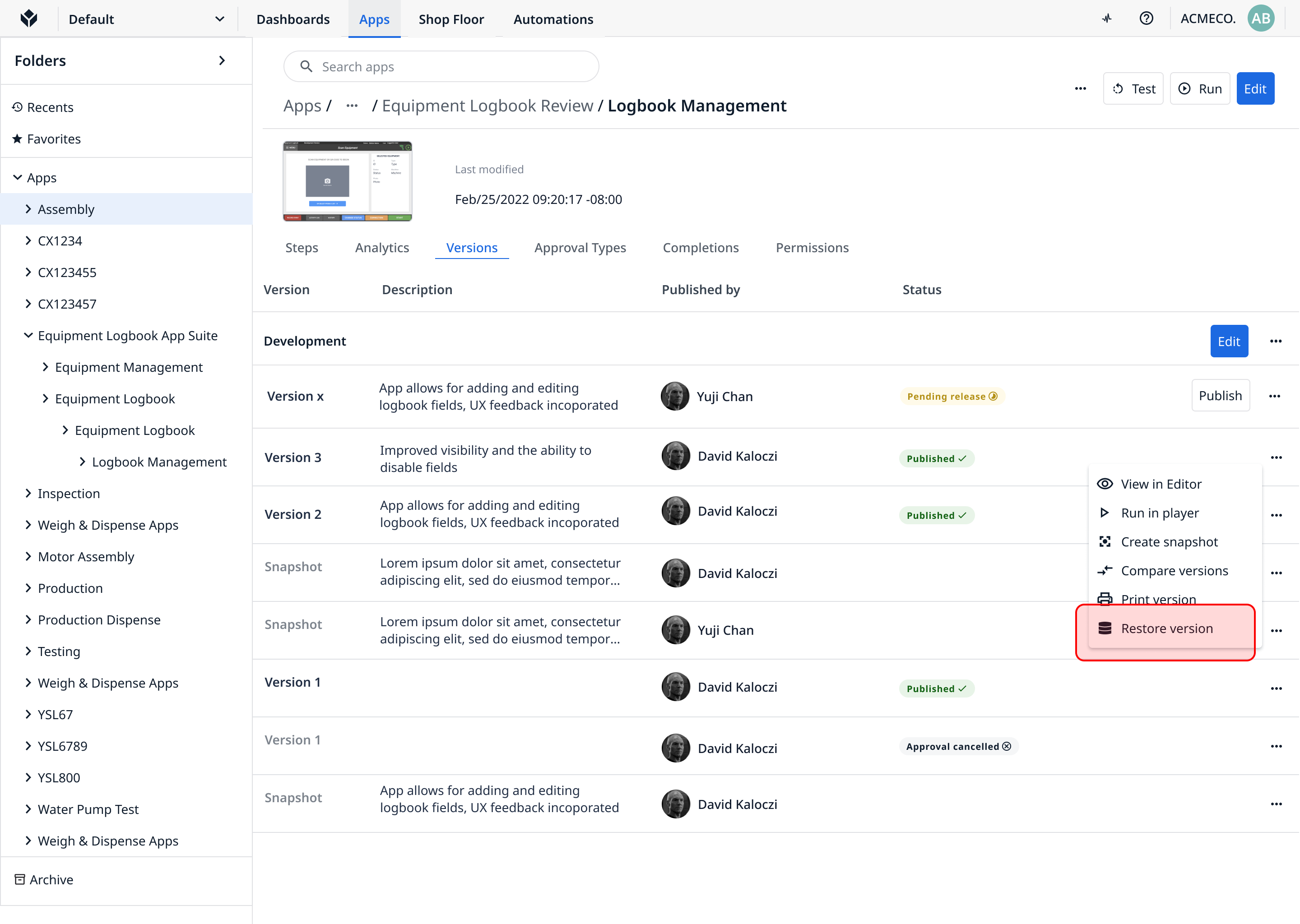
However, if you are already working on the Development Version, you will not want to erase your current work.
This is where "snapshots" come into play. Use the "Create Snapshot" button to save the development version separately.
The snapshot is "frozen", but you will be able to restore it to the development version later.
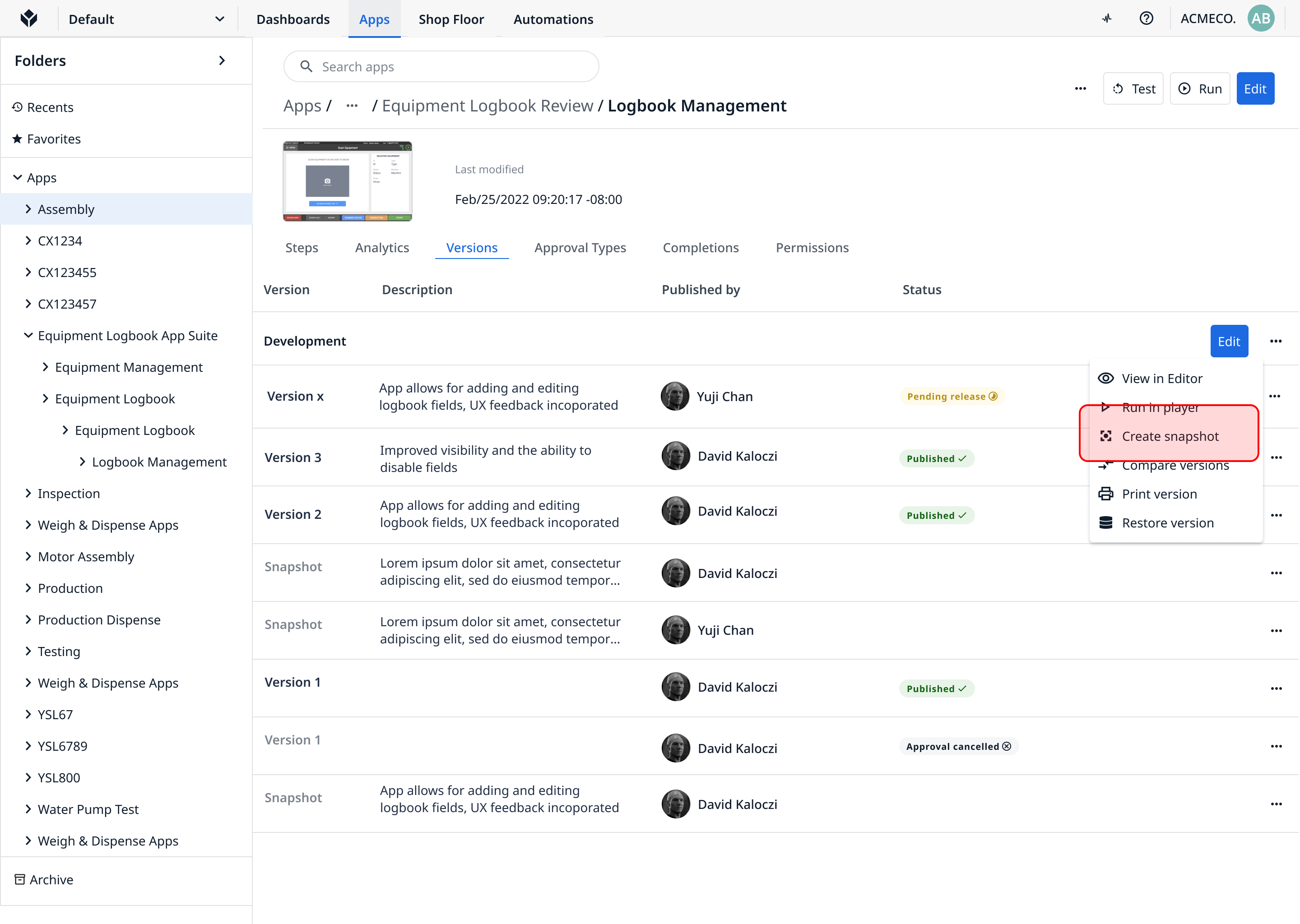
This is also helpful when you want to create two versions of an app for a teammate to review. You can save one version as a snapshot and continue editing the second version as the development version.
By following these guidelines, you can effectively manage your app's versions, ensuring stability and consistency in your production environment.

